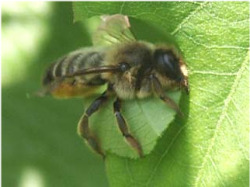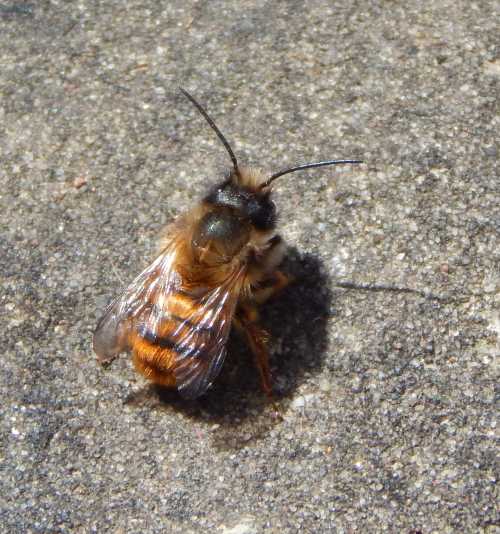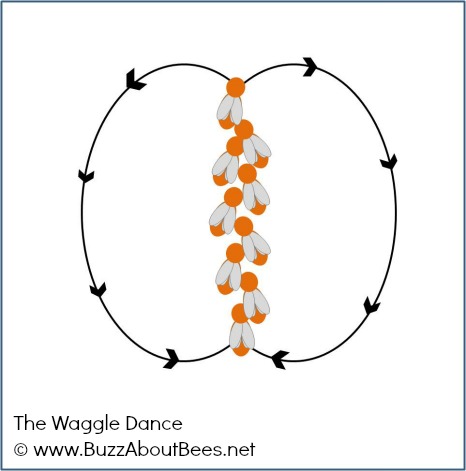The Bees In Your Backyard
- A Guide To North America's bees
If you are
looking for an informative read about bees in North America and Canada, and a
book that will help you identify bees as well as provide habitat for them - will this book help you? - A book review.
Students as well as interested amateurs, will learn much from this excellent book, by Wilson & Messinger Carril - The Bees In Your Backyard which though written by experts, presents a plethora of information in a style which is both engaging and easy to read.
The authors are Joseph S Wilson – professor of biology at Utah State University, with over 10 years experience studying bees and wasps; and Olivia Messenger Carril, who has been studying bees and flowers for nearly 20 years, and has a PhD in plant biology from Southern Illinois University.
This book sets out all the essential background information about the different bee species: life cycles; predators; taxonomic hierarchy (nice to see it clearly and simply explained, as well as tips on pronunciation); habitats; the value of bees as pollinators, bee sociality etc etc; yet also….
- answers
some of the obvious questions on everyone’s lips, such as What do bees eat? Where
do bees live?
- includes
interesting and sometimes surprising factual snippets both within the text and in coloured blocks – for example:
- Not all larvae of the Habroda species emerge from the nest in the same year! Whilst some will emerge, others may remain in the nest for up to 2 years – although the book also points out that some species will delay emergence for 7 or even 10 years!;
- Male squash bees have been found to be better pollinators than female squash bees;
- If you see a species of Andrena sitting motionless outside on a cool morning, it is ‘shivering’ inside to warm up its body before commencing with its activities;
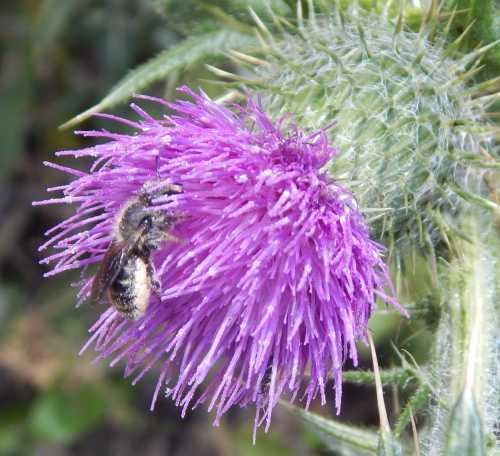
- draws
out exceptions to otherwise general rules (e.g. there are a few bees which feed
on dead flesh – I have previously written about some of these stingless bees);
- dispels some common myths and misunderstandings, thus providing clarity (– e.g. honey bees are the only bees in North America to lose their stings if they sting you).
The book also offers some of the best bee identification assistance I have seen in any book about bees, quite simply because:
- the
photographs are excellent generally – including the ‘wild’ shots as well as the
specimen photos
- there
is a useful colour-coding section, using photographs
- there
is a very helpful key guide, enabling you to answer some simple questions based
on the physical characteristics of the bee, again with great photographs –
simply answer each question to keep narrowing down the potential species until
you can correctly determine the bee’s I.D.
- identification
tips based on bee family.
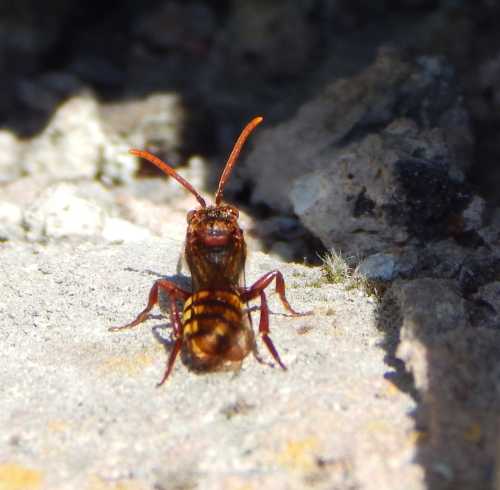
Helping bees
With so many
people keen to help bees, it’s always good to see tips on creating habitat and
providing food.
The book offers guidance on providing bee houses and selecting plants based on the region in which you live. Interestingly, the authors state their list is based not on USDA zones, but on ‘natural delineations in bee species ranges and seasonality across the year’. My initial concern with this was that the regions would be too narrow, and simply help to reinforce fragmented habitats and narrow ranges. However, this is not the case. The United States and Canada have been divided into 7 regions. This gives bees broad habitat ranges, which is more helpful to expand bee populations.
The lists of flowers are relatively small, with some key flower species identified. However, the list provides a color code for the plant, and I tend to think that the selection is ample given the size of most gardens. For anyone needing a longer list of plants for a very large space, there are many sources of information available online.
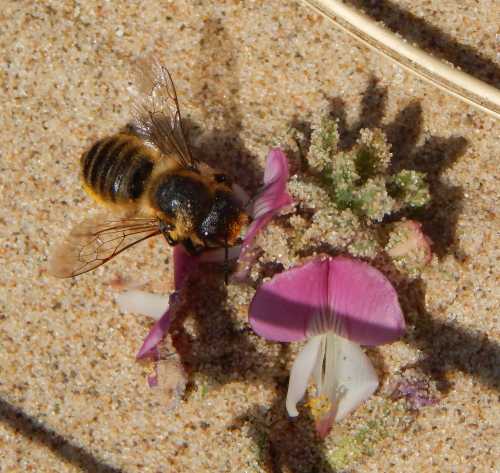
Who is this book for?
Just about
anyone interested in learning about bees!
It’s ideal for students and teachers wishing to pass on information to
students.
It’s great for interested
amateurs, whether their perspective is that of a citizen scientist/conservationist,
a parent wanting to pass on lots of information to inquisitive children, or
simply some-one who thinks bees are amazing, and want to learn more. The Bees In Your Backyard is available from Amazon and good book shops.
BuzzAboutBees.net is a member of the Amazon Associates Program.
As an Amazon Associate I earn from qualifying purchases if you click on a link from my website to an Amazon website page. I only recommend books and goods I myself like. Further information, see: Advertising And Affiliates Disclosure.
Meadowland
by
John Lewis-Stempel
A review of this beautiful nature diary
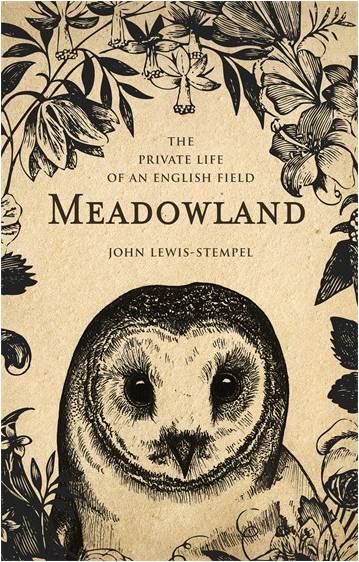
If you found this page helpful or interesting, I'd really be grateful if you would share it with others - if not this page, perhaps another, such as Gardening For Bees.
Thank you so much :) .
